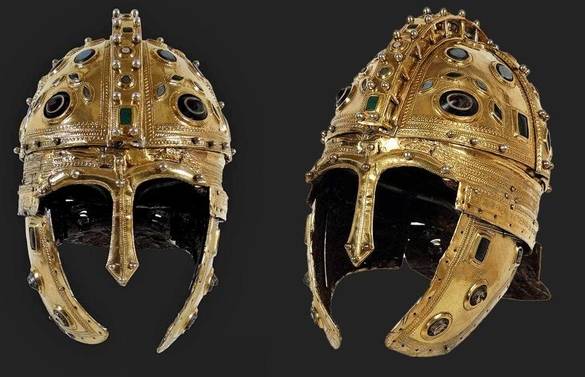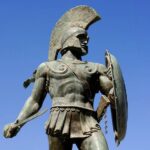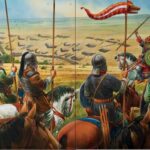How did the materials and quality of Roman military helmets change over time? The Roman military helmets, known as “galeae,” evolved over time in response to changes in warfare, technology, and fashion. The design and materials of Roman helmets underwent several transformations from the early Roman Republic to the late Roman Empire. Here is an overview of the changes and developments in Roman military helmets:
Early Roman Republic (c. 4th century BC – 1st century BC)
During the early Roman Republic, the Roman soldiers used helmets that were influenced by the helmets of their Etruscan and Greek predecessors. These helmets were typically made of bronze and were of the “Montefortino” type. The Montefortino helmet was conical in shape with a rounded or pointed top, a neck guard, and cheek guards. It was a simple design but provided basic protection to the head and face.
Mid to Late Roman Republic (c. 1st century BC – 1st century AD)
As the Roman Republic expanded and encountered different cultures and technologies, the design of the Roman helmets started to change. The “Coolus” type helmet became popular during this period. The Coolus helmet was a development from the Montefortino type but featured a more refined design with a rounded or hemispherical shape and a more pronounced neck guard. The quality of the materials also improved, with helmets being made from better quality bronze or even iron.
Early Roman Empire (c. 1st century AD – 3rd century AD)
During the early Roman Empire, the “Imperial Gallic” and “Imperial Italic” helmets became the standard types used by the Roman legions. The Imperial Gallic helmet was a more advanced and sophisticated design, with a wider and deeper bowl, a reinforced neck guard, and cheek guards that provided better protection to the face. The Imperial Italic helmet was similar but had a more elongated shape and a distinctive comb running across the top.
The quality of the materials used in these helmets continued to improve, with some helmets being made from high-quality iron or even steel. The helmets also started to feature more ornate decorations and inscriptions, showcasing the wealth and status of the Roman Empire.
Late Roman Empire (c. 3rd century AD – 5th century AD)
During the late Roman Empire, the design of the helmets underwent further changes influenced by the military reforms and the shifting tactics of warfare. The “ridge helmet” or “ridge-crested helmet” became popular during this period. This helmet featured a prominent ridge or crest running across the top and was often made of iron or steel. The cheek guards and neck guard were also improved to provide better protection to the face and neck.
In addition to the standard military helmets, there were also specialized helmets used by different units and ranks within the Roman army, such as the “cavalry helmets” used by the Roman cavalry and the “officer helmets” worn by high-ranking officers.
Conclusion
Overall, the materials and quality of Roman military helmets evolved significantly from the early Roman Republic to the late Roman Empire. The design became more sophisticated, and the materials used improved in quality, providing better protection to the Roman soldiers on the battlefield. The changes in the design and materials of Roman helmets reflected the advancements in military technology, the tactical requirements of warfare, and the cultural and artistic influences of the Roman Empire.


